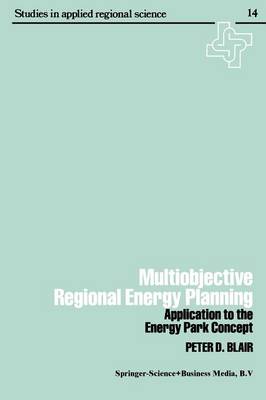In recent years, the scope of energy planning has been broadened to include a variety of additional considerations such as socioeconomic and environ mental impacts. The fundamental purpose of energy planning is to formu late policy. Policy must be formulated in response to the interests which that policy would affect. A planning model called policy programming is developed in this work from basic concepts of hierarchical system theory and input-output analysis. The model is used in planning for energy park development in a specific region. I wish to acknowledge gratefully the suggestions of Thomas L. Saaty and Ronald Miller who commented at length on various drafts of the manu script. Support for this work was provided in part by the U. S. Energy Research and Development Administration, the U. S. Federal Energy Administration, and the University of Pennsylvania Energy Center. Peter Blair December, 1977 Contents Preface v PART ONE: SYSTEMS THEORY AND ENERGY PLANNING 1. Introduction 1. 1 Energy planning 3 1. 2 General approach to the problem 6 1. 3 Principal significance 7 2. Energy systeDM and planning 2. 1 The energy planning problem 10 2. 2 Energy planning and multiple objectives 14 2. 3 Structure of policy-making systems 18 2. 4 Energy-environment systems 21 2. 5 The eigenvalue prioritization model 27 3. Policy programming for multiobjective energy planning 3. 1 Introduction 38 3. 2 Definitions 38 3. 3 The modified hierarchical approach 41 3. 4 Goal programming 51 3.
- ISBN13 9789401723718
- Publish Date 3 October 2013 (first published 30 May 1979)
- Publish Status Active
- Publish Country NL
- Imprint Springer
- Edition Softcover reprint of the original 1st ed. 1979
- Format Paperback
- Pages 169
- Language English
